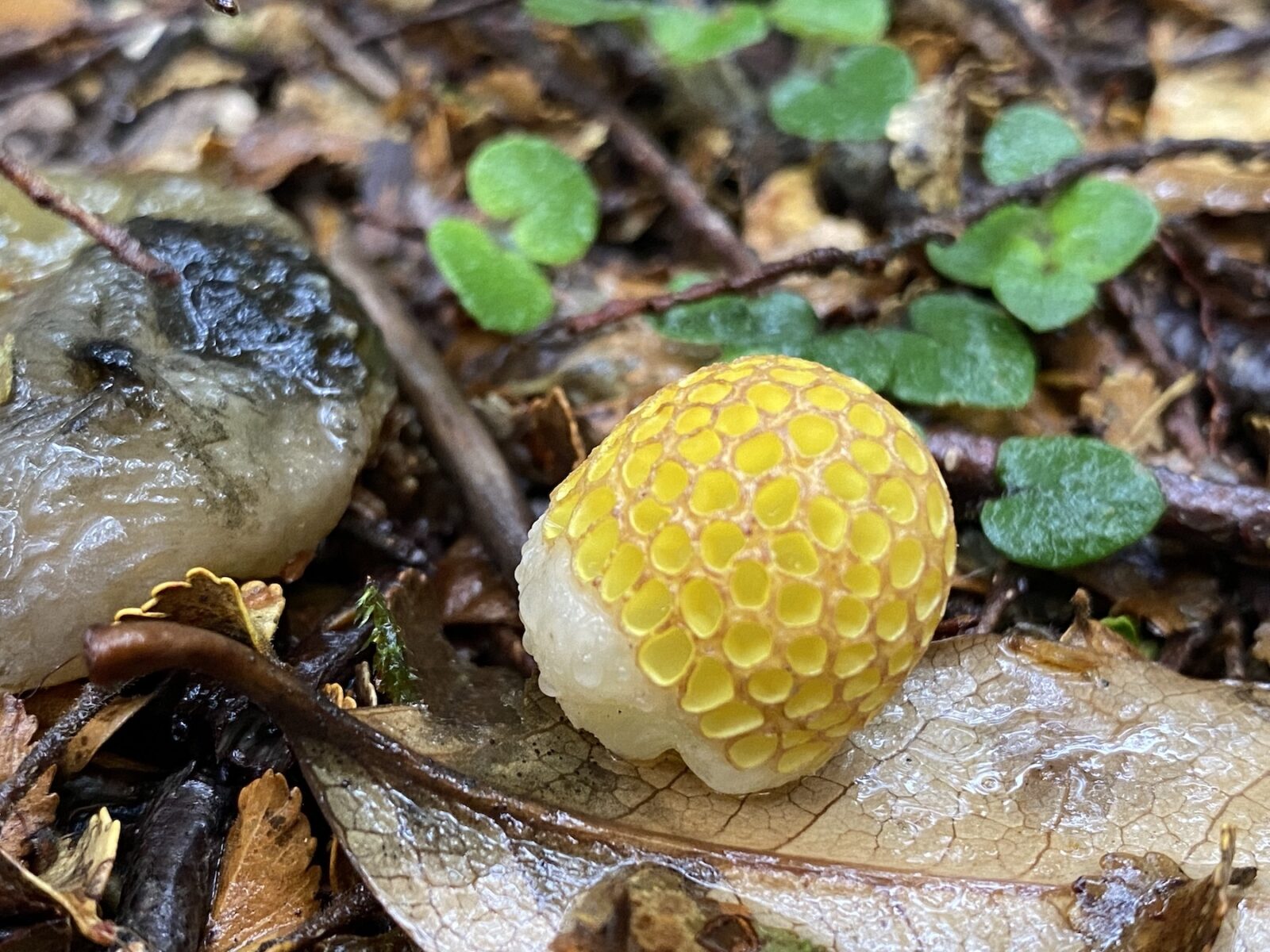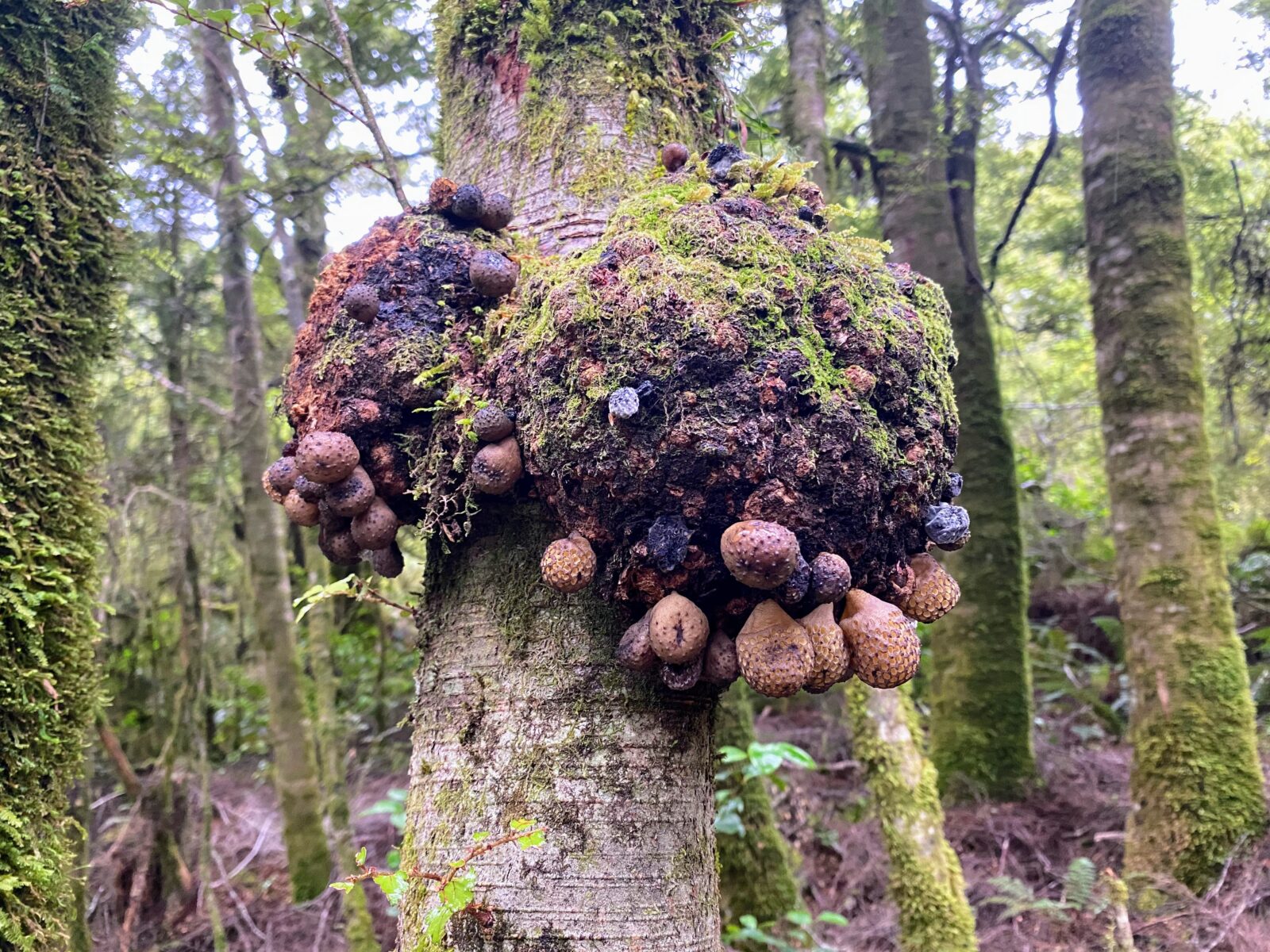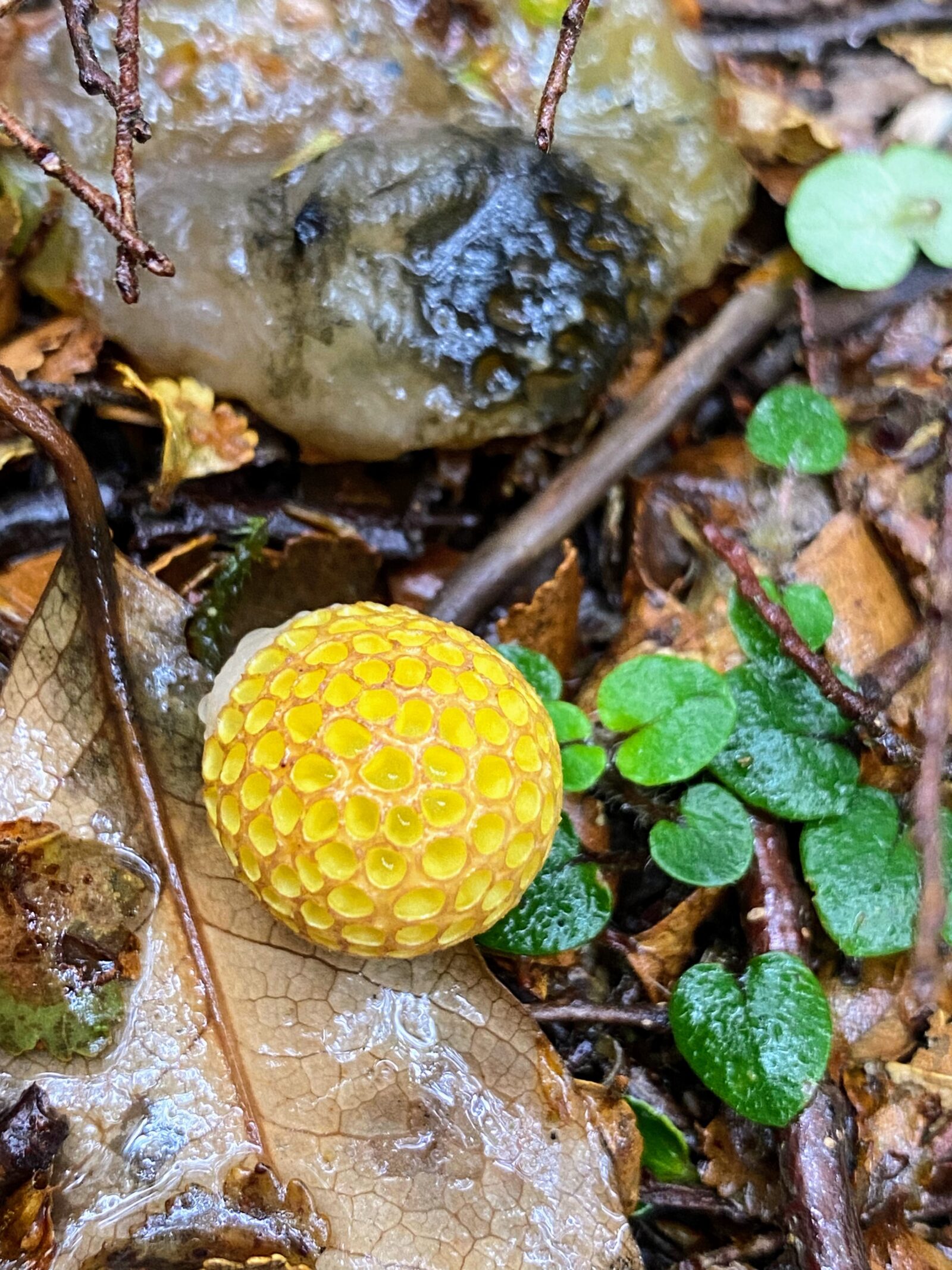Diary — Cyttaria gunnii (Beech orange)

Cyttaria gunnii (Beech orange)
Dec 10, 2021
Cyttaria gunnii, commonly known as the myrtle orange or beech orange, is an orange-white coloured and edible ascomycete fungus native to Australia and New Zealand. It is a specific parasite of silver beech (Nothofagus menziesii) trees here in New Zealand.
The fungi form globose woody galls on their host trees, though they do not appear to spread through them. They are perennial and produce crops of fruit bodies annually. Said to resemble bunches of grapes, the fruit bodies appear in clusters in late spring and summer (November to January). Globular or pear-shaped, these can reach 2.5 cm (1 in) in diameter. They are covered by a membrane that bursts, uncovering a network of concavities. The spore print is black and the spores measure 12 by 7–12 μm. Aboriginal Australians have used the fruit bodies as food. The fruits have a consistency akin to jelly and are reportedly pleasant-tasting.

This specimen was found on a silver beech tree (Nothofagus menziesii) in the Mount Aspiring National park.

Fruiting bodies forming on the gall of the beech tree trunk.
